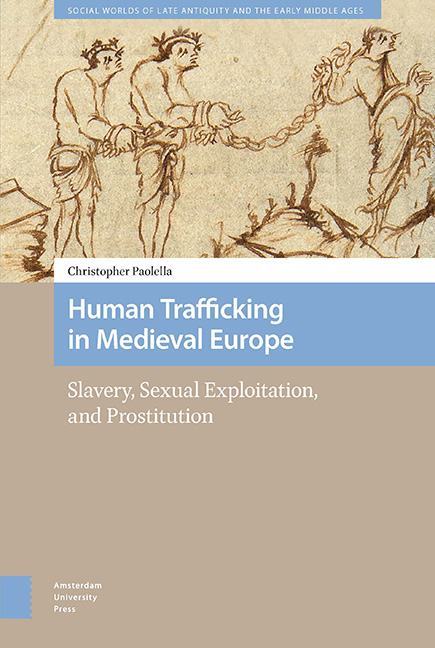Summary
Human trafficking has become a global humanitarian concern over the last 20 years, yet its coercion and violence have affected victims across the centuries. The purpose of this work is to expand our knowledge of human trafficking activity beyond the modern world by extending its study into the ancient and medieval periods. While the slave trade of Late Antiquity and the early Middle Ages is perhaps the most obvious form of human trafficking, it is not the only form. Under the rubric of human trafficking, the medieval sex trade must also be included because it involved traffickers, purchasers, clients, middlemen, and both secular and ecclesiastical authorities in a commercial enterprise that relied upon abduction, coercion, violence, deception, and exploitation to procure laborers for the commercial sex industry.
Before we proceed any further, we must define our terms. The United Nations Office on Drugs and Crime (UNODC) defines ‘human trafficking’ as:
the recruitment, transportation, transfer, harboring or receipt of persons, by means of the threat or use of force or other forms of coercion, of abduction, of fraud, of deception, of the abuse of power or of a position of vulnerability or of the giving or receiving of payments or benefits to achieve the consent of a person having control over another person, for the purpose of exploitation. Exploitation shall include, at a minimum, the exploitation of the prostitution of others or other forms of sexual exploitation, forced labor or services, slavery or practices similar to slavery, servitude or the removal of organs.
We must consider the modern definition of human trafficking, since the term did not exist in the Middle Ages. Indeed, human trafficking lacked an internationally agreed upon definition even up to the year 2000. Therefore, we are effectively and necessarily reading a modern definition backwards into a different age. Although the label ‘human trafficking’ is anachronistic, primary sources from the period nevertheless record activity that mostly fits the modern definition.
In a sense, we are at an advantage when we speak of ‘human trafficking’ as opposed to ‘slavery,’ because we currently have an internationally accepted definition of the former concept. The latter, however, has proven notoriously difficult to define with precision: as a social relationship and as a social institution, slavery has different legal definitions and cultural stigmas, and thus different socioeconomic implications for the enslaved depending on the time and the place in question.
- Type
- Chapter
- Information
- Human Trafficking in Medieval EuropeSlavery, Sexual Exploitation, and Prostitution, pp. 11 - 40Publisher: Amsterdam University PressPrint publication year: 2020



